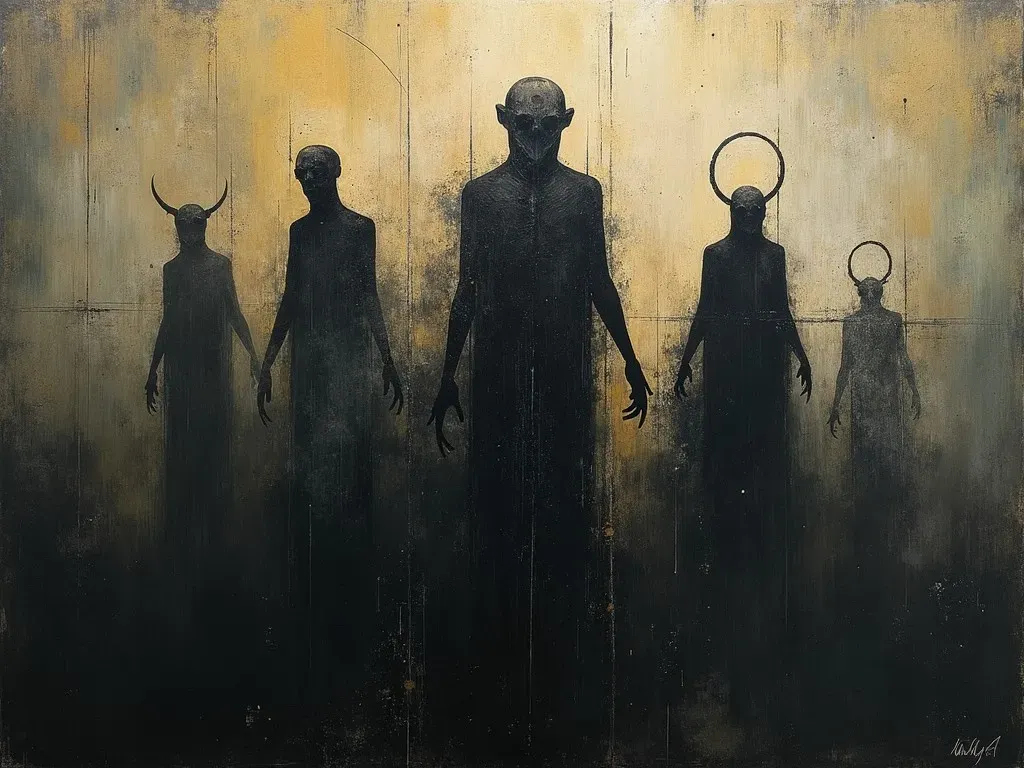Mysterious artwork refers to paintings and art pieces that hold a sense of enigma, often characterized by hidden meanings, unexplained origins, or unresolved narratives. These works provoke curiosity, leading to myriad interpretations and discussions among art lovers, historians, and casual observers alike. Mysterious art paintings encapsulate not just the skill of the artist but also the complexities of human emotion, symbolism, and the mysteries of existence.
The Enigmatic Nature of Mysterious Art Paintings
Mysterious artworks ignite our imagination and challenge our understanding. From the timeless allure of Leonardo da Vinci’s Mona Lisa to the hidden symbols in Jan van Eyck’s Arnolfini Portrait, each piece reveals layers of complexity that captivate viewers. This article delves into some of the world’s most enigmatic paintings, elucidating their mysterious aspects and inviting speculation on their meanings.
Top 6 Mysterious Paintings in the World
-
The Old Fisherman
- Artist: Tivadar Csontvary Kosztka
- Description: An old man with an oddly cut face, sitting in a boat, represents the dual nature of humanity, embodying both good and evil.
-
The Arnolfini Portrait
- Artist: Jan van Eyck
- Year: 1434
- Description: Known for its intricate symbolism, this painting depicts a man and a woman in a room, sparking debates about marital status and societal expectations.
-
The Melun Diptych
- Artist: Jean Fouquet
- Year: 1452
- Description: This diptych features unorthodox representations of the Virgin Mary, making it one of the most bizarre works in history.
-
The Persistence of Memory
- Artist: Salvador Dalí
- Year: 1931
- Description: This surrealist masterpiece uses melting clocks to explore the relativity of time, challenging perceptions of reality.
-
Guernica
- Artist: Pablo Picasso
- Year: 1937
- Description: With profound political and emotional resonance, this mural depicts the horrors of war, evoking intense interpretations regarding its symbolism.
-
The Mona Lisa
- Artist: Leonardo da Vinci
- Year: 1503
- Description: Famous for her mysterious smile, the identity and emotions of the subject remain enigmatic, leading to endless speculation.
| Rank | Artwork | Artist | Year | Key Element |
|---|---|---|---|---|
| 1 | The Old Fisherman | Tivadar Csontvary Kosztka | N/A | Oddly cut face illustrating human duality |
| 2 | Arnolfini Portrait | Jan van Eyck | 1434 | Intricate symbols about marriage |
| 3 | The Melun Diptych | Jean Fouquet | 1452 | Unorthodox depiction of Virgin Mary |
| 4 | The Persistence of Memory | Salvador Dalí | 1931 | Melting clocks symbolizing time relativity |
| 5 | Guernica | Pablo Picasso | 1937 | Mural embodying the horror of war |
| 6 | Mona Lisa | Leonardo da Vinci | 1503 | Enigmatic smile and unclear identity |
How Mysterious Artwork Captivates Audiences
The allure of mysterious artwork lies in its ability to evoke questions rather than provide answers. The obscurity allows individuals to project their interpretations, often leading to personal connections with the artwork. Mysterious art pieces also engage with historical and cultural contexts, enabling deeper dialogues about their significance.
The Role of Symbolism
Symbolism is a cornerstone of many mysterious artworks, manifesting in various forms—from hidden motifs to color palettes that convey emotional depth. Artists often embed these symbols to invite viewers into a conversation about what lies beneath the surface.
- Colors: Different colors can evoke specific emotions; for example, red may symbolize passion or violence, while blue might convey tranquility or sadness.
- Shapes and Figures: Abstract forms can represent broader human experiences, allowing viewers to discern meanings based on their personal interpretations.
Famous Examples of Mysterious Artworks
While the aforementioned paintings are notable, the art world is rife with mysterious artwork that eludes definitive explanation. Other examples include:
- The Scream by Edvard Munch – The figure’s haunting expression raises questions about anxiety and existential dread.
- The Kiss by Gustav Klimt – Not only is the portrayal of intimacy striking, but the use of gold leaf invites speculation on themes of love and transcendence.
- American Gothic by Grant Wood – The stern figures raise questions about American identity, societal expectations, and emotional depth.
| Artwork | Artist | Key Features | Mystery |
|---|---|---|---|
| The Scream | Edvard Munch | Haunting expression, swirling colors | Themes of anxiety and dread |
| The Kiss | Gustav Klimt | Use of gold leaf, intimate poses | Relationships and transcendence |
| American Gothic | Grant Wood | Stern figures, Gothic architecture | Questions of American identity |
FAQs About Mysterious Artwork
Q1: What makes a piece of artwork mysterious?
A: Mysterious artwork often features unclear narratives, hidden symbols, or emotional ambiguity that provoke curiosity and speculation.
Q2: Can the meaning of a mysterious artwork change over time?
A: Yes, meanings can evolve as societal norms, cultural contexts, and personal interpretations shift.
Q3: Are there specific periods in art history known for mysterious artwork?
A: Various art movements, including the Renaissance and Surrealism, are well-known for producing enigmatic works that engage deeply with psychological and philosophical themes.
Q4: How can one appreciate mysterious paintings?
A: Engaging with the artwork through observation, research of its historical context, and considering its symbolism can enhance understanding and appreciation.
Q5: Are there current artists creating mysterious artwork?
A: Yes, contemporary artists like Banksy create works that provoke thought and discussion through mystery, often commenting on social and political issues.
Conclusion
Mysterious artwork invites viewers into an enigmatic world where interpretations are endless and questions abound. By immersing ourselves in these complex pieces, we can explore the depths of human emotion, creativity, and society’s reflection through the lens of art. The beauty of mysterious artwork lies in its capacity for open dialogue and personal reflection, making it a rich field for exploration in the art world.
For further reading on the intriguing world of mysterious artwork, you may visit Smithsonian Magazine.
